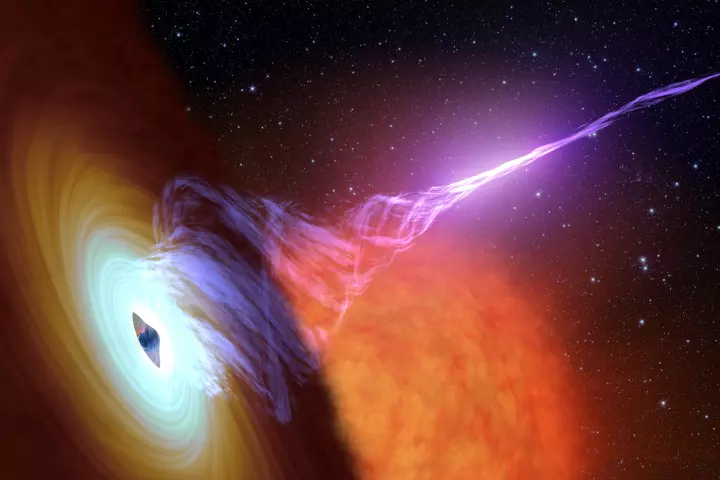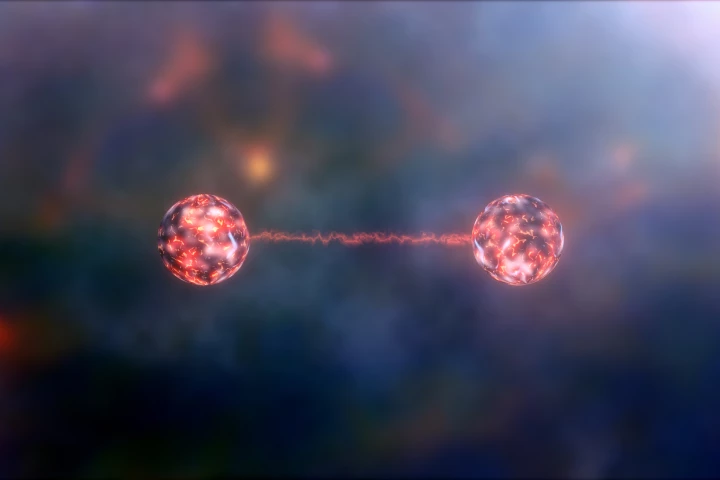Elementary particles
-
Scientists have accidentally discovered a particle that has mass when traveling in one direction, but no mass while moving in a different direction. Known as semi-Dirac fermions, particles with this bizarre behavior were first predicted 16 years ago.
-
Astrophysicists have detected the most energetic electrons ever recorded raining down on Earth. With trillions of times the energy of visible light, these cosmic rays seem to be coming from a powerful source relatively close to our solar system.
-
The first direct visualization of the shape of a photon has been created. These particles of light are impossible to photograph, but UK physicists have now calculated their wave function to produce an accurate image of a photon as it’s emitted.
-
Physicists have created the heaviest clumps of antimatter particles ever seen. Known as antihyperhydrogen-4, this strange stuff could help us solve some of the most puzzling physics mysteries.
-
Supermassive black holes have been known to belch gigantic beams of plasma into space – and now scientists have managed to recreate these fireballs in a lab at CERN.
-
Professor Peter Higgs has died aged 94. The theoretical physicist was best known for his prediction of a key elementary particle, the Higgs boson, which earned him the 2013 Nobel Prize in Physics soon after its discovery.
-
Physicists at Brookhaven National Laboratory have discovered a completely new type of quantum entanglement, the spooky phenomenon that binds particles across any distance. This allowed scientists to peer inside nuclei in more detail than ever before.
-
This month marks the 10th anniversary of the discovery of the Higgs boson. But what exactly is this particle, and why is it so important? What has it taught us in the last decade – and more importantly, what could it teach us in the next decade?
-
The movements of the Sun, Moon and stars have long been used to keep track of time, and now engineers from the University of Tokyo have proposed a new way to use the cosmos to precisely track time, using showers of particles from cosmic rays.
-
A collaboration of physicists has made the most precise measurement of the mass of the W boson. The new measurement of this key particle differs drastically from the Standard Model's predictions– and it may unravel physics as we know it.
-
Last year, physicists reported that an experimental dark matter detector picked up a strange signal. A new Cambridge study suggests it could be the first direct detection of dark energy, the mysterious force accelerating the expansion of the universe.
-
Physicists at CERN have discovered an exotic new particle that’s quite charming. Known as Tcc+, the particle belongs to a rare class called tetraquarks, and its unusual composition makes it the longest-lived exotic hadron found so far.
Load More











